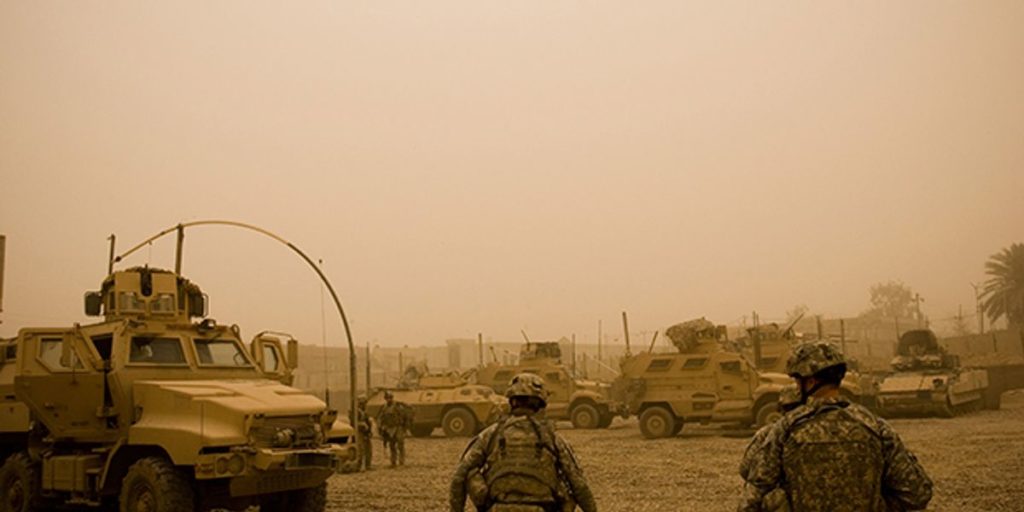But it was the Irish Republican Army that first demonstrated the level of havoc that homemade bombs could create in a sustained campaign. Over 37 years, from the early 1970s until the late 1990s, the IRA targeted infrastructure and British soldiers and achieved “a complete spectrum of development of the IED from simple, crude devices to quite sophisticated devices,” says Lt. Col. Jim Storr, a British Army veteran. In the early 1970s, the British Army was dealing with as many as 1400 IED detonations a year, Storr says.
That’s how many occur in Iraq and Afghanistan in three or four months.
The prevailing theory on the future of warfare contends that recent and ongoing conflicts—in Afghanistan, Bosnia, Iraq, Israel, Lebanon, Sudan—are just the opening phases of what will be a decades-long era of scattered, low-intensity engagements that will pit advanced countries against a constantly changing assortment of nonstate militias and marginal or failed states. The conflicts will be “asymmetric,” meaning that the fighting won’t involve vast arrays of tanks, fighter planes, and bombers, radar and countermeasures, and troops firing ordnance at each other in accordance with military doctrine as it has evolved over the past 2500 years. Given their goals and the means available to them, and their need to counteract their opponents’ overwhelming advantages in technology and resources, insurgents and militiamen will keep on using IEDs, including car and suicide bombs.
To be specific: “The IED threat will be long-term, because nobody will want to fight the United States force-on-force,” predicts Col. Dick A. Larry, head of the IED division of the U.S. Army Asymmetric Warfare Office.
“IEDs have the capability to inflict damage, political and psychological, out of all proportion to their size and cost,” noted Maj. Gen. Anthony Stone, the former director of special projects for the UK’s Ministry of Defense, at a recent conference on counter-IED technology.
Some analysts warn that rogue fighters will inevitably use weapons of mass destruction, probably in an improvised way. And though the United States and some European and Asian countries have seen few IED attacks so far, not many analysts think that state of affairs will go on indefinitely.
“If we do not find solutions now in Afghanistan and Iraq, we will continue looking for solutions when this problem comes to the United States,” says Colonel Barry L. Shoop, who is director of the electrical engineering program at the U.S. Military Academy and was JIEDDO’s first chief scientist.
The difficulty of the counter-IED challenge arises from many factors. The physical, electromagnetic, and chemical environments in which IEDs are deployed are chaotic and cluttered. The social networks that let insurgents fund, build, and emplace IEDs are incredibly complex. And IEDs themselves are hugely diverse, their makers having proved themselves tireless in adapting and altering their creations.
All IEDs have a power source, a trigger, a detonator, and a main charge. The power source is usually a battery. Its function is to supply enough energy to the detonator, usually a blasting cap, to enable it to set off the main charge. In 2004, as IEDs began proliferating wildly in Iraq, the main charge was typically artillery rounds lashed together to explode simultaneously, the casings shattering to provide shrapnel. Bomb makers also frequently pack ball bearings around the main charge to maximize casualties.
Over the past couple of years, Sunni insurgents have favored homemade explosives for the main charge. They’re more easily used in the huge quantities needed to fling through the air the 25-ton vehicles now commonly used by U.S. forces. The typical homemade explosives in Iraq, urea nitrate and ammonium nitrate, are produced using nitrogen-based fertilizers. To make urea nitrate, bomb makers separate the urea from the fertilizer and then use nitric acid to attach a nitrate group (NO 3 ) to the urea molecule.
The fertilizers and other materials are not easily controlled, because Iraq’s struggling economy has a large agricultural component. And even with hundreds of IED incidents a month in Iraq, the relative amount of fertilizers diverted to making IEDs is small.
Five-gallon cans or barrels are common containers for the main explosive. For a barrel, the detonator might be a bag filled with TNT and a blasting cap (ironically, the bag has often been the thick plastic bag that a military “meal, ready to eat” comes in). To complete the IED, a trigger of some sort is connected to the detonator. Such a bomb could easily destroy a light vehicle like a Humvee or could seriously damage a heavier, more extensively armored vehicle, such as an MRAP (mine- resistant, ambush-protected) truck.
The two most lethal forms of IEDs are deep-buried IEDs and explosively formed penetrators (EFPs). They account for only 5 to 15 percent of all IEDs in Iraq but roughly 40 percent of the IED casualties, according to the latest figures from the U.S. Defense Department. Deep-buried IEDs often contain hundreds of kilograms of explosive and have flung heavily armored vehicles like MRAPs tens of meters, in one case killing all on board.


